Webhook (Deprecated)
Note: This trigger has been deprecated. We recommend to update deprecated flows to use WebhookV2.
Description
The Webhook trigger allows a HTTP request to initiate a Flow defined in Extension Portal. In a typical scenario this trigger would be utilized to allow a workflow defined somewhere else to continue execution in a U4EC Flow. More details are available for such a scenario at Appendix A: LogicApps.
Note: When you are posting to this endpoint, you need to make sure you also set the media type to application/json, and that the body of the message should contain a valid JSON object or array.
Usage
Configuration
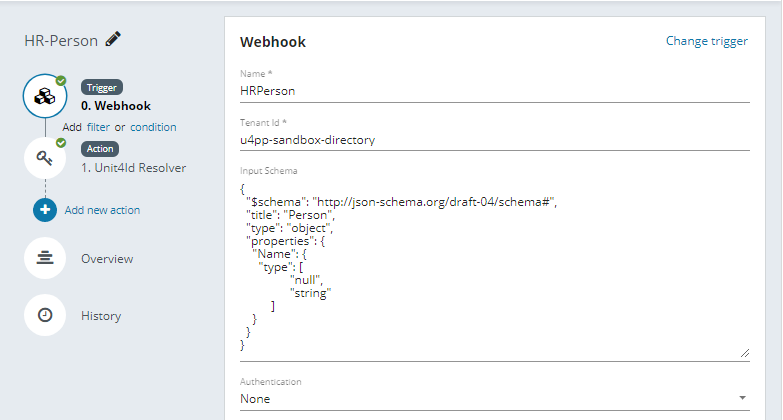
An unique descriptive name needs to be provided for a Webhook trigger.
Optionally a JSon schema can be provided, in this case the webhook trigger will validate any input received to match this schema.
Note: TenantId is part of the configuration, but it does not need to be provided and will not be displayed, unless the user is logged into the U4EK Administration Portal with the Administration tenant.
Authentication
Optionally the endpoint can be secured, using one of the following authentication method
Basic
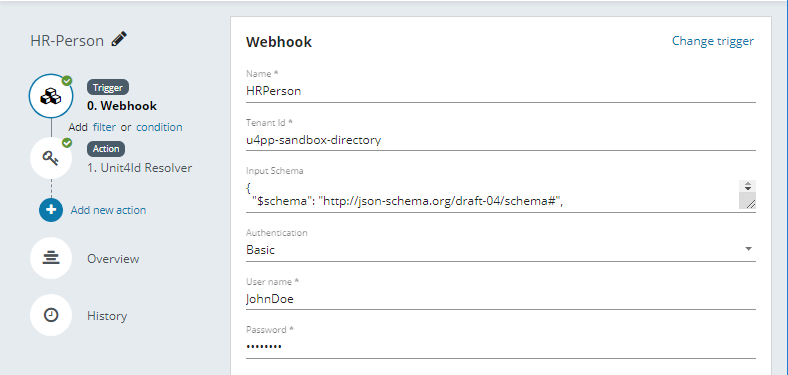
An User name and a Password needs to be specified. When calling this endpoint, an authentication header needs to be provided as described at the following link
U4IDS (connected)
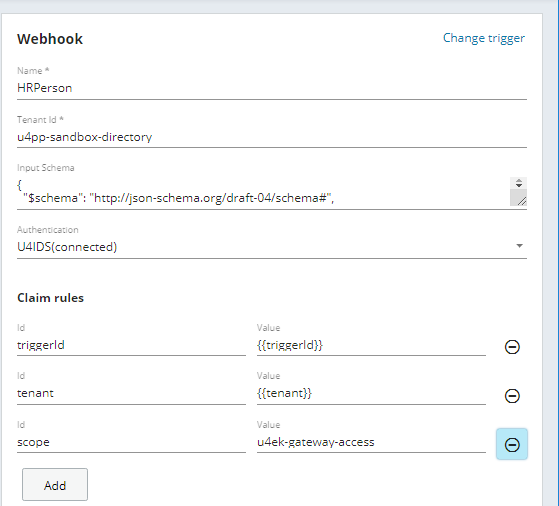
When calling an endpoint that is secured by U4IDS, a token has to be sent in the authorization header, that is obtained from U4IDS. Optionally some claims can be requested to be present in the token. When setting up such claims, in the values we can use the macros {{triggerId}} and {{tenant}}, they will be replaced with their actual values automatically.
Azure Active Directory
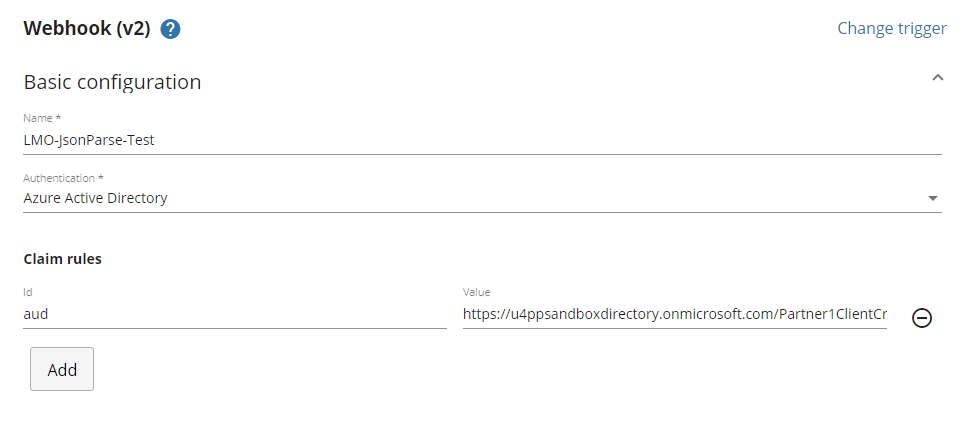
When calling an endpoint that is secured by U4IDS, a token has to be sent in the authorization header, that is obtained from Azure Active Directory. Optionally some claims can be requested to be present in the token. When setting up such claims, in the values we can use the macros {{triggerId}} and {{tenant}}, they will be replaced with their actual values automatically.
Input
The body of the message that is posted to the endpoint.
Output
The original input received.
Custom data
After saving a flow that uses the Webhook trigger, the system will generate 2 URI's. The first one, Address is the URI to which the data needs to be pushed by the external application. The second one, Metadata Address provides an endpoint that returns the metadata in Swagger / OpenAPI format. This metadata address can be provided for example when using the Logic App's Http + Swagger connector.
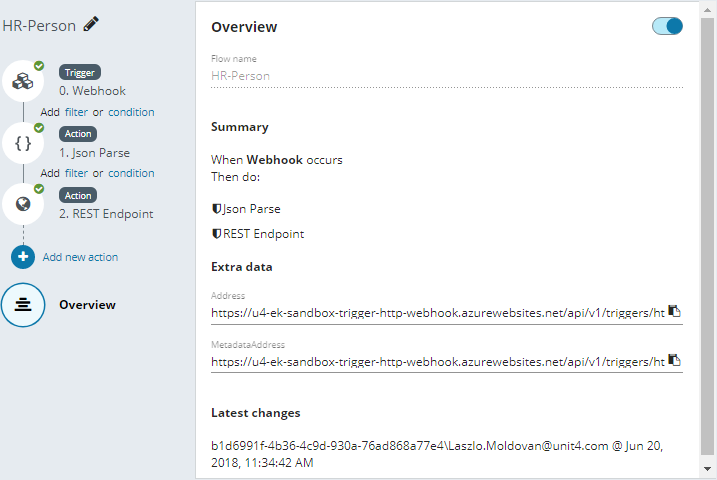
NOTE: Custom data will be cleared if the flow is disabled.